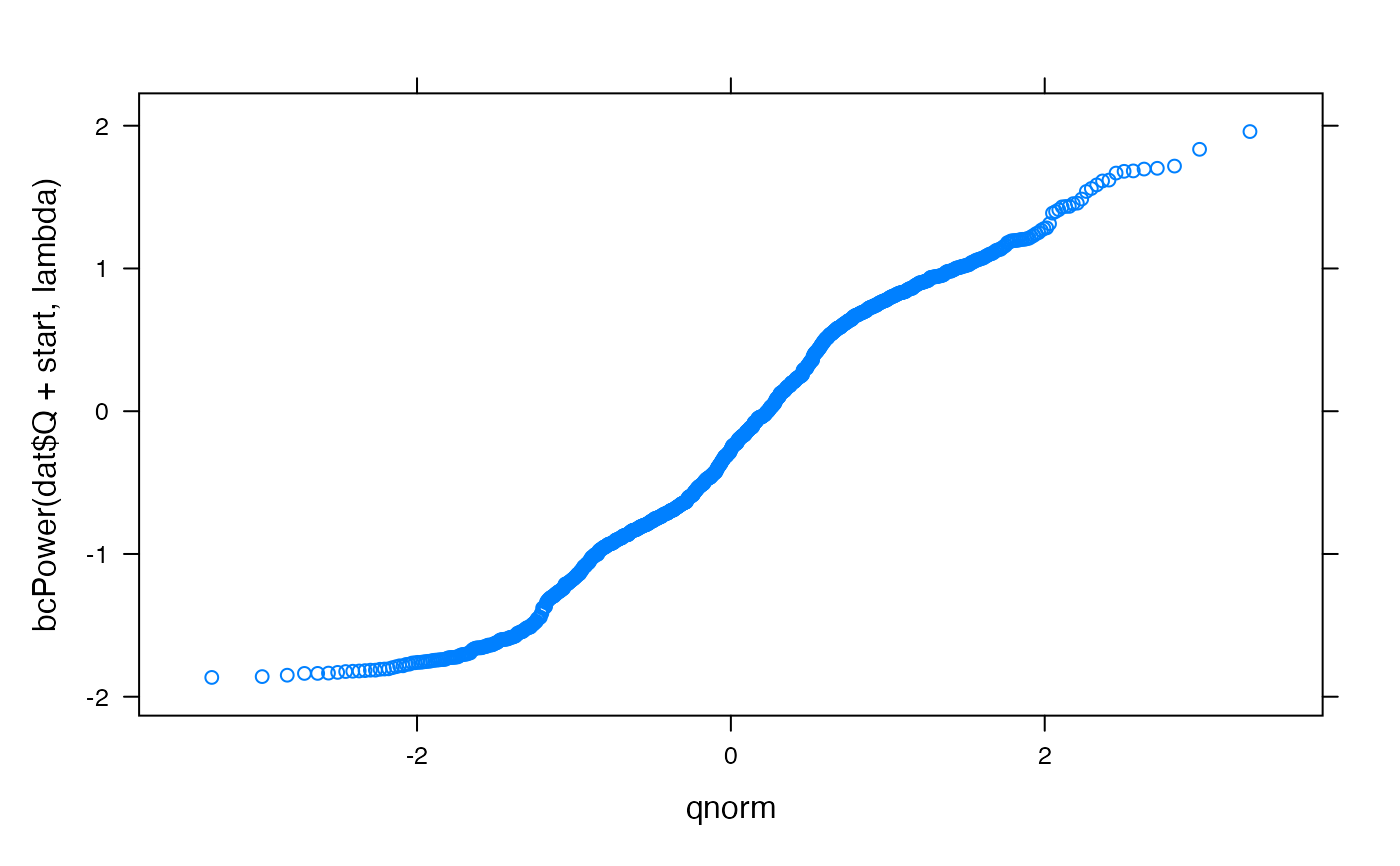Generate objective functions with aggregation, transformation and a reference model
Source:R/buildTsObjective.R
buildTsObjective.RdGenerate objective functions with temporal aggregation, data transformation and an optional reference model.
buildTsObjective(
Q,
groups = NULL,
FUN = sum,
...,
ref = NULL,
boxcox = FALSE,
start = NULL
)
buildTsLikelihood(
Q,
groups = NULL,
FUN = sum,
...,
boxcox = FALSE,
start = NULL,
distribution = dnorm,
outliers = 0
)Arguments
- Q
observed data, typically a
zooobject.- groups
an optional grouping variable, of the same length as
Q, to aggregate the observed, fitted and reference time series. This can be afactor, or a plain vector. It can also be azooobject withfactor-typecoredata, in which case it will be matched with corresponding times inQ, etc. Typicallygroupswould be generated bycut.Date(for regular time periods) oreventseq(for events). See examples.- FUN,
the aggregation function (and any extra arguments) to use on each group when
groupsis specified. The actual aggregation is done byeventapply.- ...
Placeholder
- ref
output from a reference model correponding to
Q. This is passed, after any aggregation and/or transformation, tonseStat. If left asNULL, the mean (of aggregated/transformed data) is used.- boxcox, start
if
boxcox = TRUE, each dataset will be transformed with a Box-Cox transformation (seebcPower). The power is estimated from the observed seriesQ(after any aggregation) bypowerTransform. Alternatively the power can be specified as the value of theboxcoxargument. Note thatboxcox = 0is a log transform. The offset is specified as thestartargument; ifNULLit defaults to the 10 percentile (i.e. lowest decile) of the non-zero values ofQ.- distribution
Placeholder
- outliers
Placeholder
Value
buildTsObjective returns a function, which can be
passed arguments Q, X, ... (the standard signature for hydromad
objective functions). The Q argument is ignored since it was already
specified directly to buildTsObjective: i.e. the returned function is
only valid on the same dataset Q with corresponding fitted values
X. Further arguments to the returned function will be passed on to
nseStat (therefore the objective function is to be maximised,
not minimised). If boxcox = TRUE was specified, the estimated
Box-Cox power can be extracted from the returned function f by
environment(f)$lambda and similarly for the offset value
start.
See also
Examples
data(Cotter)
dat <- window(Cotter, start = "1990-01-01", end = "1993-01-01")
## use Box-Cox transform with parameters estimated from Q
objfun <- buildTsObjective(dat$Q, boxcox = TRUE)
objfun(X = dat$Q + 10)
#> [1] -6.854694
## extract the estimated Box-Cox parameters
lambda <- environment(objfun)$lambda
start <- environment(objfun)$start
require(car)
#> Loading required package: car
#> Loading required package: carData
qqmath(~ bcPower(dat$Q + start, lambda))
 ## in this case the result is the same as:
nseStat(
bcPower(dat$Q + start, lambda),
bcPower(dat$Q + 10 + start, lambda)
)
#> [1] -19.13578
## use monthly aggregation and log transform (Box-Cox lambda = 0)
objfun <- buildTsObjective(dat$Q,
groups = cut(time(dat), "months"),
FUN = sum, boxcox = 0
)
objfun(X = dat$Q + 10)
#> [1] -8.327432
## in this case the result is the same as:
nseStat(
bcPower(dat$Q + start, lambda),
bcPower(dat$Q + 10 + start, lambda)
)
#> [1] -19.13578
## use monthly aggregation and log transform (Box-Cox lambda = 0)
objfun <- buildTsObjective(dat$Q,
groups = cut(time(dat), "months"),
FUN = sum, boxcox = 0
)
objfun(X = dat$Q + 10)
#> [1] -8.327432